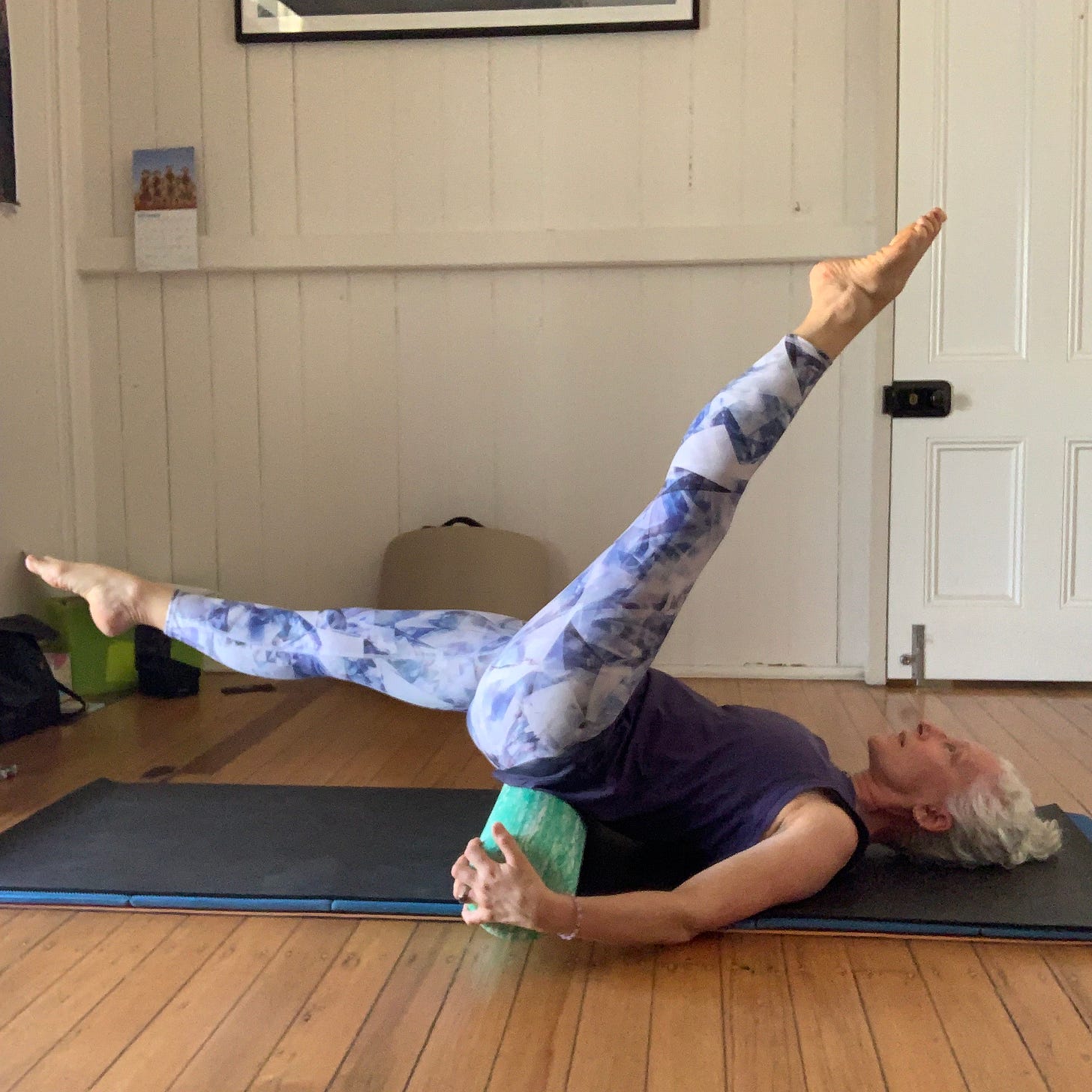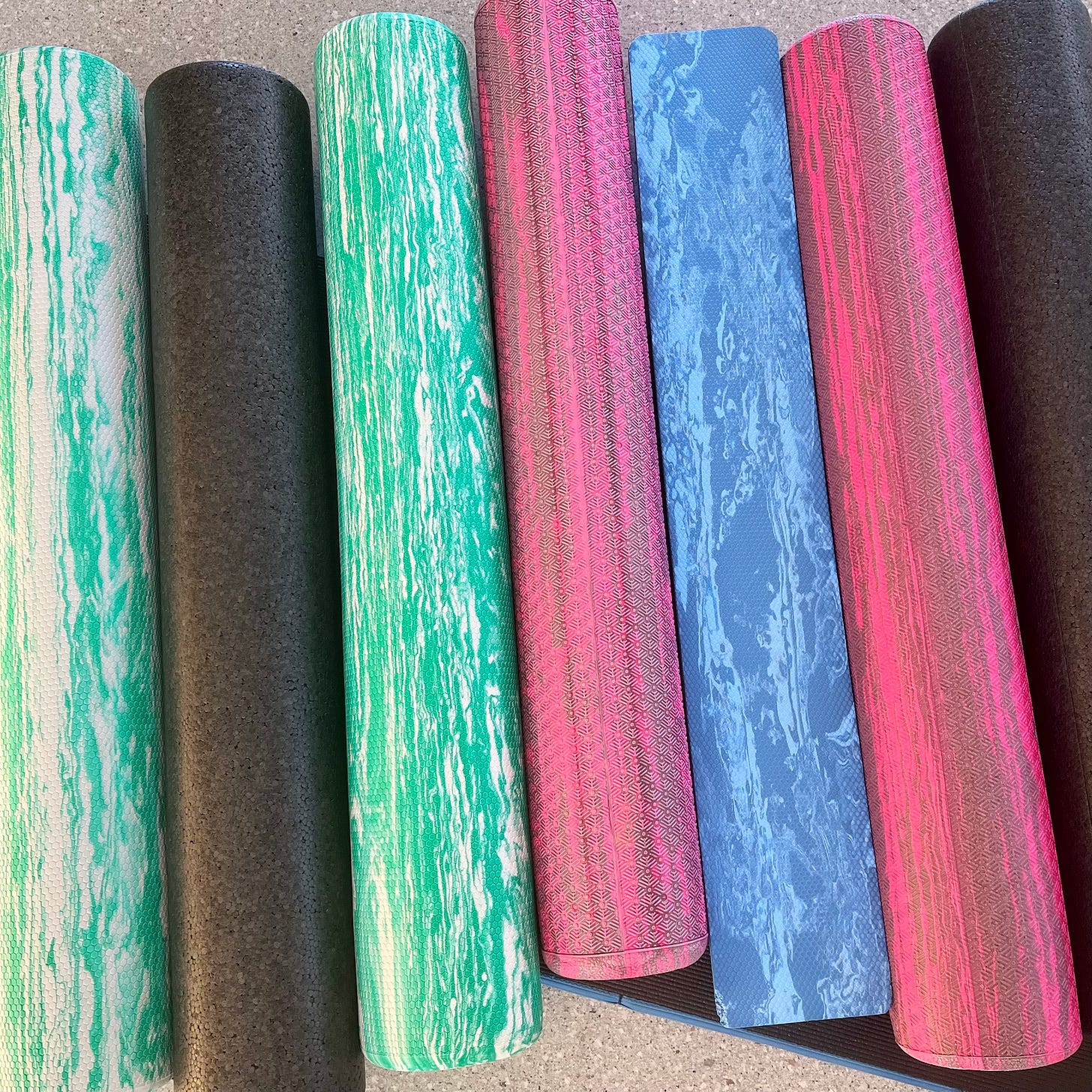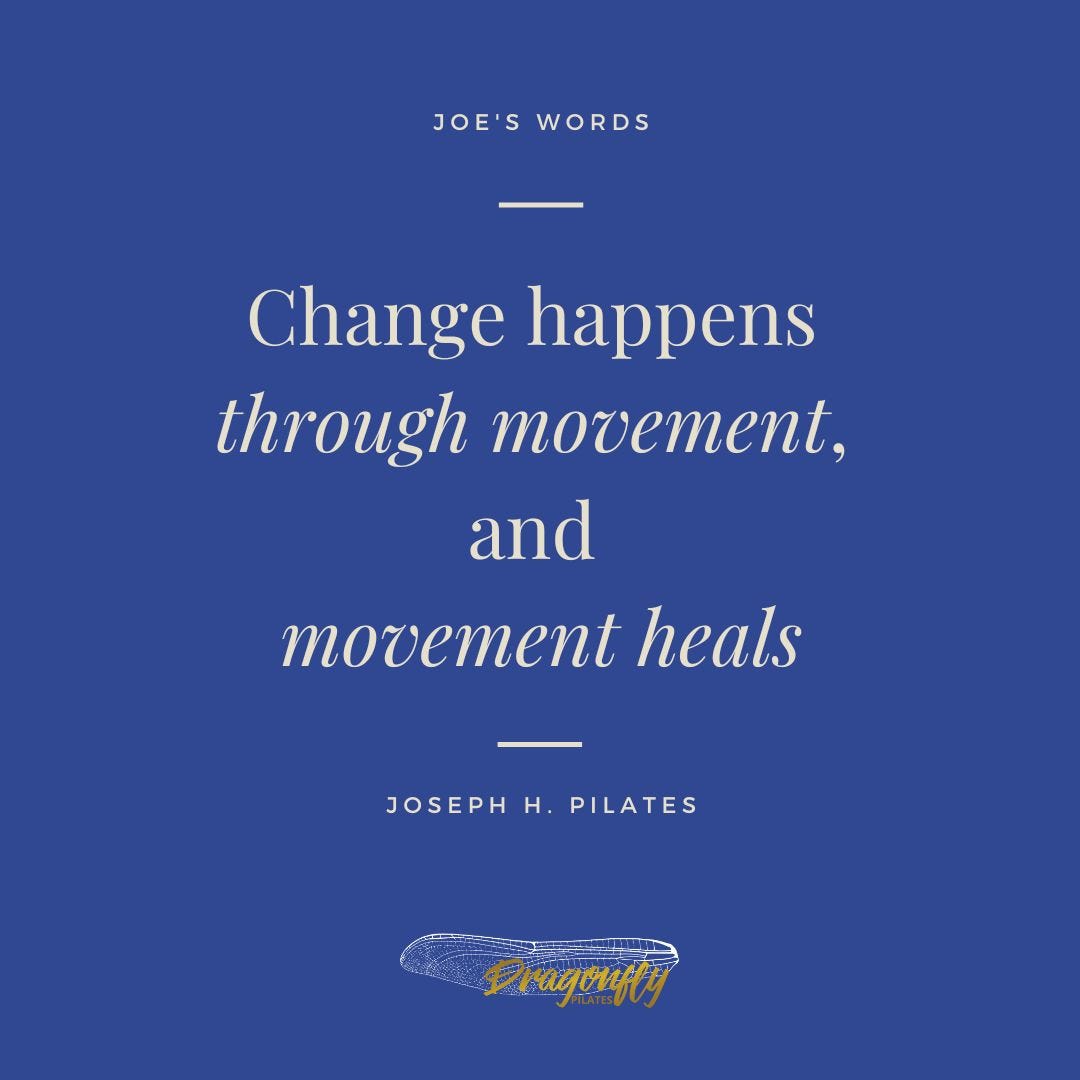Find the Full Potential of Your Foam Roller
Discover the versatility of the foam roller: exercises, benefits, and tips to improve balance and strength with this small but mighty fitness tool.
Unlock Your Foam Roller’s Full Potential
Do More Than Roll Your ITBs
The foam roller is one of the most versatile pieces of small equipment you can own. Often thought of as just a tool for rolling out your quads or iliotibial bands (ITBs), the foam roller offers So. Much. More!
This simple piece of equipment can enhance your Pilates practice, improve balance, increase strength, and challenge proprioception. Are you ready to rock and ROLL? Let’s explore the many uses and benefits of the foam roller.
History
Can we just acknowledge how ubiquitous foam rollers are nowadays? I mean they are everywhere. In gyms, Pilates studios, physiotherapy clinics, and of course, many, many households. But even though I’ve been using them for self care for close to 30 years, until now, I’ve never put much thought into where they actually came from.
Moshe Feldenkrais, an Israeli scientist and martial artist is credited with the first historical use of a foam roller. He developed the Feldenkrais®️ Method after incorporating his knowledge of the body and science to recover from a knee injury. When he emigrated to the USA in the 1970s he found that cylindrical packing rollers made of foam could be repurposed to support his work. Among other things he had practitioners stand on them for balance challenges and I too use them this way with my clients.
In the 1980s, through Feldenkrais’s practitioners, foam rollers worked their way into the physical therapy world. Now 40 years later, furthered by the idea of their use as a tool for self-massage and workout recovery, they are everywhere. Do you have one at home?
What is a Foam Roller?
Foam rollers are cylindrical tubes of dense foam. They come in various types and sizes but are generally 12-15 cm / 6 inches in diameter. They can range in length but IMHO a full-length - usually around 90 cm / 36 inches - closed-cell foam roller is ideal for maximum versatility and is what I recommend. The length means that all but the super tall will be able to fully lie down.
Closed-cell foam rollers are durable and maintain their shape better than open-cell varieties which can become misshapen and less effective over time. It’s very common for open cell foam rollers to end up being more elliptical than round which makes rolling feel a bit like you’re in a Flintstones type car with square wheels. This is a case of you get what you pay for because a good quality foam roller is not cheap.
a few of my rollers, different colours equate to different firmnesses. The blue one is flat on top since it’s a half roller - good for folks who need a bit more stability.
Why Use a Foam Roller?
Versatility and Benefits
Muscle & Fascial Release: This is what people are most familiar with. Rolling out their quads, hammies, the aforementioned ITBs (which I rarely if ever do or assign). Using the foam roller this way can help with fascial release, improving flexibility, and reducing muscle tension.
Pilates Barrel Substitute: The roller can help you replicate many of the Pilates barrel exercises, specifically the ones where your hips are elevated.
Versatility! Multiple Uses: Lie on it, sit on it, kneel on it, stand on it, stand up and use it or place it under various body parts for different exercises.
Stability and Proprioception: Because the surface area is small as well as unstable, the foam roller gives you all sorts of ways to fine tune your deep core muscles.
Strengthening: Depending on the exercise the foam roller can definitely be used to build strength. For example, because your feet are below you when you’re lying down the load to pick them up is increased.
Flexibility: Your ROM can be increased. As above, the floor is below you when you’re lying down. In arm circles your arms can go further (and gravity helps as well).
How to Use a Foam Roller
Techniques and Tips
Rolling Basics:
Roll each body part for 3 to 5 passes.
Go slowly to identify specifically where you’re tight, avoid tissue resistance & locking up, ensuring effective release.
Focus on your breath to maximise the benefits.
Spine Rolling:
Roll from the top of the shoulders down to the bottom of the ribs.
Avoid rolling the lower back due to the lack of bony support.
Fascial Pinning Technique:
Roll until you find a tender spot (what I call an "icky bit" - you’ll know when you’ve found one believe me).
Pin the tissue with your weight or additional pressure from another body part, for example if you’re working on your calves, bring the other leg on top of the one being worked on for additional weight.
Once the tissue is pinned Move the distal part (e.g., foot and ankle for calves) in the biggest ROM (range of motion) that you can without losing the pin to release tension.
Specific Exercises with the Foam Roller
A Few Examples
Lying Lengthwise on the Roller:
Knee Floats - bring your legs up to a table top position one at a time.
Toe Taps - once in table top, lower one leg down until your toe touches the mat, making sure to move from the hip joint not the knee. Alternate.
Paint Brush Heels - keep one leg at table top and straighten the other one up to the ceiling (think of putting a foot print up there). Then, slowly lower the straight leg - imagining painting a strong stripe with your heel down the wall below you. Either hold or bring it back up and repeat.
Rolling Like a Ball - this is totally about balance and body organisation. You do get to use your hands on the floor the whole time which means you need to keep the ball shape without using them. The ROM is small, small, small and make sure to sit towards the front of the roller so you have room to roll. It’s hard but fun!
Roller Horizontally Under Hips:
Mimic the Pilates barrel work for hip and core exercises.
You can do the whole leg spring series.
The rolling over and up Mat exercises that are challenging (Roll Over, Corkscrew, Jackknife) can all be done here. The roller helps because the hips are already partially lifted.
Easily achieve delicious hip opening stretches. Hug one knee to your chest as the opposite leg stays straight and reaches below you to the floor.
Balance Work:
Stand on top of the foam roller to challenge and improve balance.
Perform pretty much any Mat exercise: Roll Up, small range Single Leg Circle, even just The 100 curl, all will be harder due to the instability and small surface area of the roller.
Upper Body & Shoulder Stretches:
From standing, hold the foam roller with your hands to stretch arms, lats, chest, and torso.
Lying supine (on your back), Arm circles or Pony arms or just open them wide to the floor and relax.
Plank Variations:
Forearms or hands on the roller.
Feet on the roller, either tops of the feet for a big ask from the quads or balls of feet which can be scary getting into position.
There are so many other ways to use the roller, for example:
Kneel on it and do side stretches or thigh stretches.
Sit on it for a figure 4 stretch or seated side bends.
Up your abdominal work by bracing the roller either between your thighs and hands or working unilaterally with it between one foot and the same side hand while the other leg moves.
Here are some more traditional exercises with the foam roller👇
And some exercises offering creative variations👇
Why the Foam Roller is Great for Balance
The foam roller’s instability makes it an excellent tool for balance training. Standing or performing exercises on the roller forces your body to engage deep stabilising muscles, improving overall balance and coordination. Remember our balance needs to be challenged to be maintained and is one of the body’s systems that weakens as we age.
Tip: if your balance is not the best and you’re planning on standing on top of the roller, line it up perpendicular to a wall and use a hand on the wall for an assist.
Contraindications
There are definitely some instances where caution should be taken with foam roller use. For example, at my old studio we had a client who had osteoporosis and she cracked a rib using a foam roller.
The force applied through foam rolling is also not recommended for deep vein thrombosis, open wounds, or recent tissue inflammation. Going into this too deeply is outside my scope of practice as a Pilates Instructor so here’s a link to a Delphi study that gathered expert’s opinions on the Contraindications and Cautions on Foam Rolling.
Conclusion
The foam roller is a deceptively simple yet incredibly versatile piece of equipment that can greatly enhance your Pilates practice either in a studio or at home. Whether you're using it for muscle release, balance training, or replicating Pilates exercises, the foam roller offers numerous benefits.
I hope you’ll explore the full potential of your foam roller and unlock a new dimension in your fitness journey!
xBec
The information contained above is provided for information purposes only. The contents of this blog are not intended to amount to advice and Rebecca Forde disclaims all liability and responsibility arising from any reliance placed on any of the contents of this post







